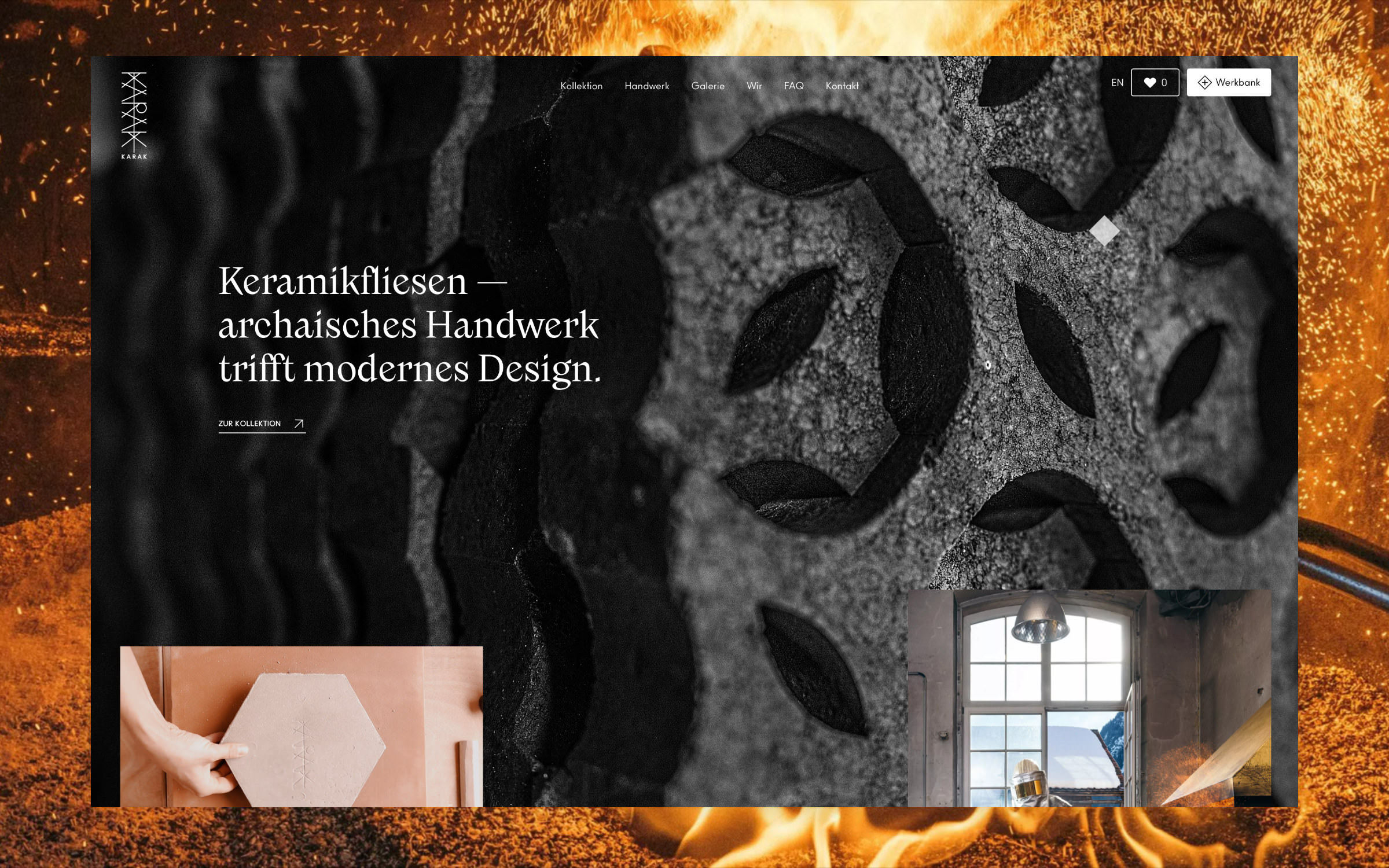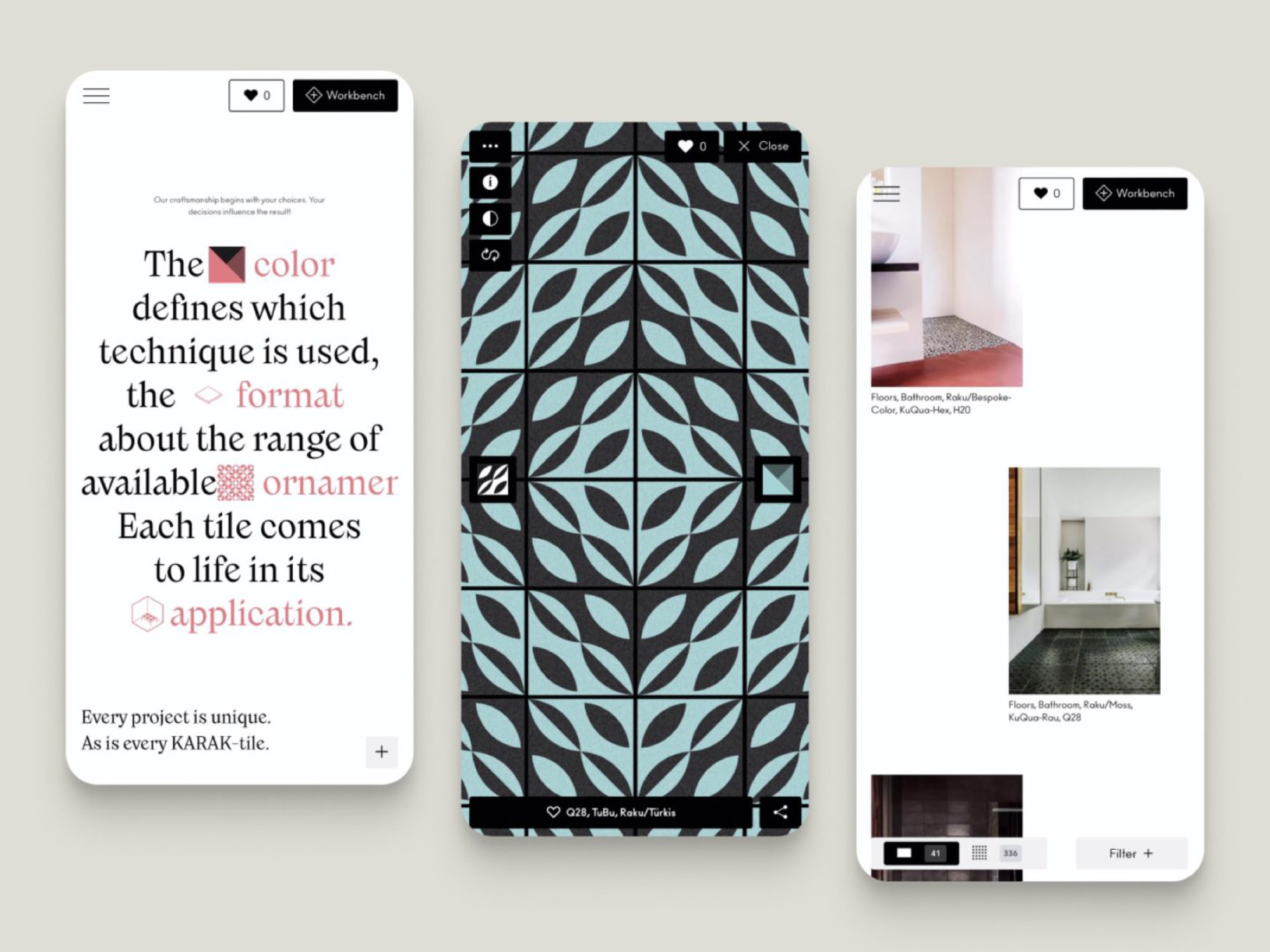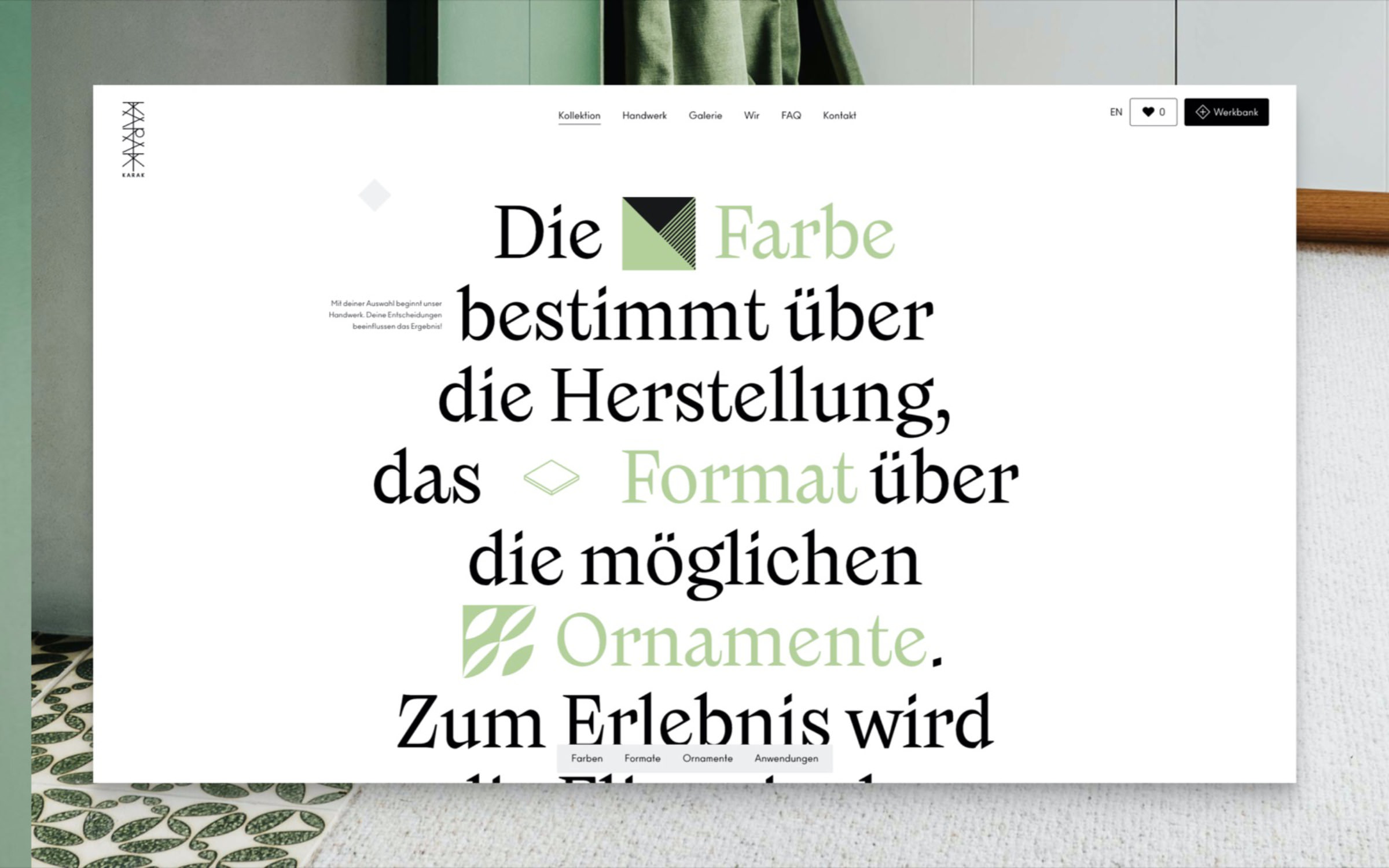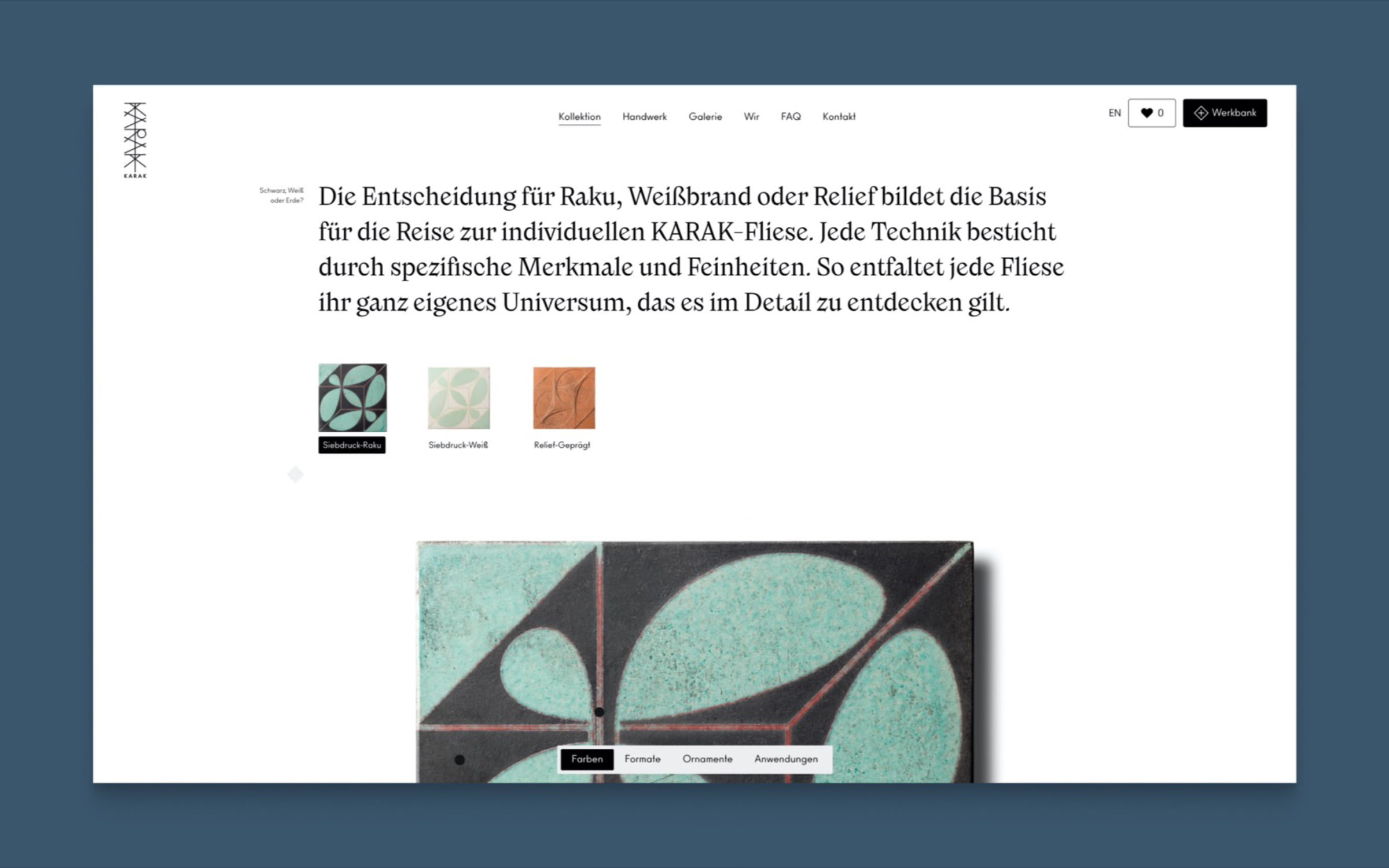hey are then embedded in a container with leaves, straw or sawdust to form an airtight seal. The resulting smoke, as well as the minerals contained in the organic materials, create patterns on the clay and glaze, making each tile inimitably unique.
Each KARAK tile blank is individually shaped by hand and bears the unmistakable hand-stamped logo on the back. “As a sign of its originality and our conviction that this actually completely crazy manufacturing process is the only true one for us.” emphasizes the tile maker, whose concept was developed in 2007 by the ceramic artist Marta Rauch-Debevec and clay builder Martin Rauch. In 2015, Sebastian Rauch and his childhood friend Thomas Rösler took over the art project and turned it into a company.



